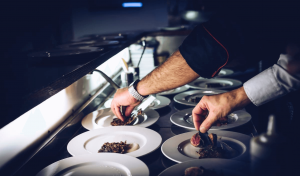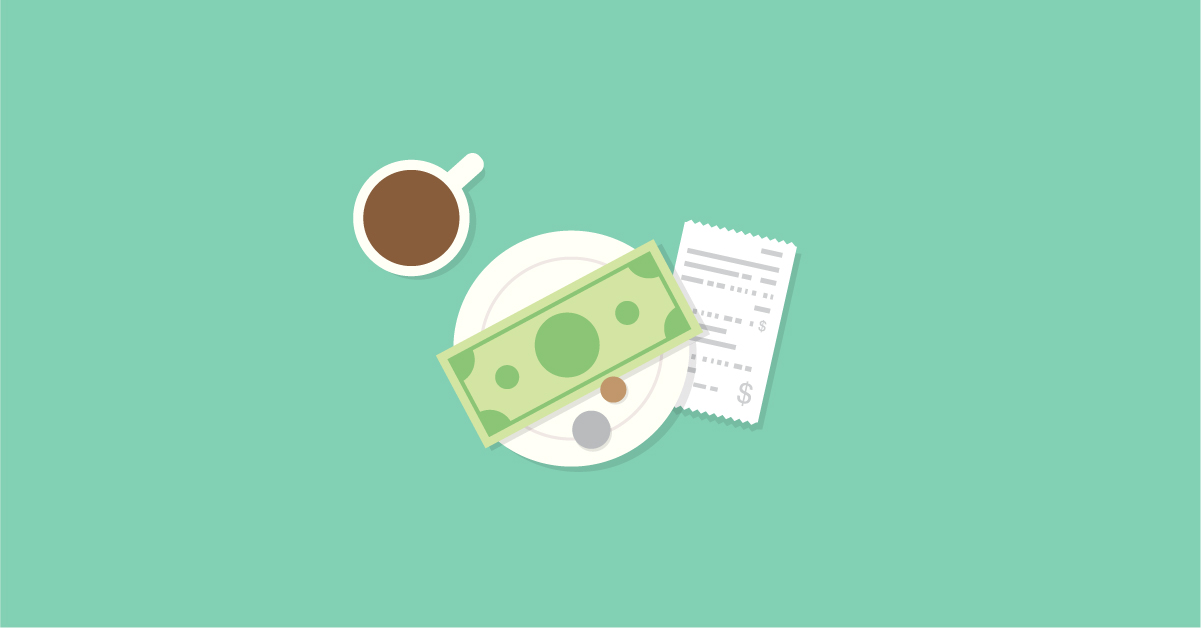
Fraud is common in restaurants. Why? Large staffs with multiple people who have access to systems and registers, combined with multiple shifts and high employee turnover, the owner can’t be there every second of the day to prevent restaurant fraud.
In this article we’ll cover:
- External vs. internal restaurant fraud
- Three types of external fraud in restaurants and how to prevent them
- Six types of internal fraud in restaurants and how to prevent them
Are you charging enough for menu items? Use the free food cost calculator to calculate prices based on your desired margins.Food Cost Calculator
External restaurant fraud vs. internal restaurant fraud
External fraud is committed by customers, vendors, suppliers or anyone else who isn’t directly employed by your restaurant. Internal fraud is committed by employees. Statistically, internal fraud accounts for the vast majority of fraud in business, all industries included. The National Restaurant Association estimates that employee theft accounts for 75% of restaurant loss.
3 types of external fraud in restaurants
1. Chargebacks
What are chargebacks?
A chargeback is when a customer disputes a legitimate charge on their credit or debit card and is refunded the amount of the disputed charge. There are three types of chargeback fraud: merchant error, criminal fraud and friendly fraud.
- Criminal fraud is just as it sounds. This occurs when fraudulent credit cards are used or when a guest has patronized your restaurant, made their payment then disputed the charge for a refund.
- Merchant errors are a grey area of chargebacks. As an example, a guest may claim their meal was terrible and demand a refund, despite the fact that they finished the entire meal and never alerted their server to an issue. The merchant does refund the money on their own accord, but the reasoning may be fraudulent.
- Friendly fraud occurs on the customer end of the chargeback. Accidental friendly fraud is when a consumer authorized a purchase but files a chargeback without realizing they are responsible for the purchase. For example, a child may be verbally authorized to use their parent’s credit card. When the bill arrives, the parent may dispute the charge, assuming it’s fraud.
How to stop chargeback fraud
- Process according to processor protocol. For card-present purchases, check that the card has not expired and enter the security code on the card if applicable. Use updated systems, like EMV technology, to avoid holding the liability for a chargeback.
- Train employees to pay attention to the warning signs of fraud. Obtain and verify signatures and be aware of customers attempting to pay using several credit cards. If many of these transactions are declined, the activity may be fraudulent.
- Use clearer payment descriptors on your end. If your restaurant’s name is Holly’s Cafe use a descriptor that your customers will recognize on their credit card statements, such as “Hollys-Cafe-Restaurant,” rather than the name of a parent company or bank.
- Address customer service issues swiftly. If a customer expresses displeasure, reach out to them quickly to try and solve the issue at hand.
2. Vendor fraud
What is vendor fraud?
- Billing schemes, check tampering and bribery or extortion schemes fall under the vendor fraud umbrella. Billing schemes occur when an employee uses false documentation to generate false payment for their benefit.
- Check tampering is when checks are manipulated to be deposited into an unintended bank account. This can include forgery or altering payee information.
- Bribery and extortion schemes happen when an employee either receives or demands inappropriate personal payments from a vendor.
How to stop vendor fraud
- Segregation of duties. There should be clear divisions between the employees receiving the goods and those processing invoices and payments.
- Manage third party access. Make sure third party vendors, such as payroll, only have the access they need to perform. This prevents security breaches and ensures security for your employees.
3. Break-ins and robberies
A robbery is when a victim is present and robbed of something valuable by way of force or intimidation. Break ins and burglaries are usually done without a victim present, such as a restaurant being robbed before or after hours.
How to stop break-ins and robberies
- Use a monitored alarm system & surveillance camera. Silent alarm systems contact the police without alarming the robbers, providing you the potential recovery of stolen goods and/or money.
- Empty cash drawers nightly. The less unattended money left in the restaurant, the less someone could get away with.
- Change up routines. Do not do the same thing every morning or every night. Someone may be canvassing your restaurant for a future burglary and learning your most vulnerable times. Use the buddy system—open and close with two employees together to provide more security than a solo open.

6 types of internal fraud in restaurants
1. Auto-gratuity scams
What are auto-gratuity scams?
Auto-gratuity is when a restaurant automatically adds a gratuity service charge to a bill. Typically, the auto-gratuity is 18% of the bill and is only applied to parties of six or more. This policy is usually printed on the restaurant’s menu.
Auto-gratuity scams occur when an employee takes advantage of customers who may not have noticed that the gratuity was already added, and allows them to add an additional tip.
How to stop auto-gratuity scams
Look for employees with higher than average tips. If there is a bill with a large tip in addition to a standard service fee, it is possible the customer wasn’t made aware of automatic gratuity and left an additional cash tip.
2. Wrongly voided transactions
What are wrongly voided transactions?
A void is a transaction which cancels, or entirely deletes, a completed transaction.
Wrongly voided transactions happen when a server charges a customer for their full order, but later voids certain items and pockets the money for said items. Insights from your restaurant POS can compare the amount of voids/comps of each server and help you keep tabs on these expenses.
How to stop wrongly voided transactions
- Compare average voids over a period of time. Compare the average amount of employee voids to the employee causing suspicion. This can pinpoint the problem employee and hold them accountable.
- Check time stamps on void. Employees make take advantage of fewer employees being on shift in the early mornings and late nights to fraudulently void transactions. Time stamps will distinguish what voids take place during open restaurant hours, and which do not.
3. Undercharging scams
What is undercharging?
Undercharging occurs when an employee charges for a more expensive item and rings it into the POS as a cheaper item. For example, a bartender may take a customer’s order for a $15 glass of wine. The bartender then rings it into the restaurant’s POS as an $8 glass of wine, pocketing the $7 difference.
How to stop undercharging scams
- Check inventory often. This scam is popular because it can’t be detected on most restaurant POS systems and flies under the radar unless inventory is consistently checked. Automize inventory using automatic inventory software which ensures that what is being rung into the POS is what’s being served to customers.
4. Time theft
What is time theft?
Time theft comes in numerous forms: employees taking extra breaks, clocking in too early, or clocking out too late. Paper timesheets, poor employee engagement and poor scheduling can all be factors in encouraging employee time theft in your restaurant.
How to stop time theft
Effective scheduling. Scheduling software can create schedules, send shifts to employees and enforce punch-in rules for your restaurant.
5. Food theft
What is food theft?
Food theft is when employees eat food aside from the allotted shift meals, give free meals out to friends and family or take food home without permission.
How to stop food theft
- Track all sales and inventory. Whether it’s as simple as sneaking an additional snack without permission or a more serious issue like stealing a crate of food right off a delivery truck, these thefts are costly in the long run.
- Limit access to alcohol. Alcohol can represent some of the more expensive items on a restaurant’s menu, such as a fine wine or aged liquor. Reduce the risk of theft by keeping a running inventory and limiting access to alcohol to certain employees, such as bartenders and general managers.

6. Intellectual property theft
What is intellectual property theft?
Recipes, customer or vendor lists and certain kitchen operations are all types of potential trade secrets. This includes formulas, patterns, programs, devices, methods and techniques of executing menu items. Although often overlooked, intellectual property theft is a large contributor to restaurant fraud.
How to stop intellectual property theft
- Patents. Patentable materials include manufactured articles, machines, industrial processes and chemical compositions. An Italian restaurant may have the owner’s grandmother come in and cook the pasta sauce from scratch, alone, without a recipe written down. This makes the sauce a valuable trade secret—it is something you’ve gone out of your way to protect.
- Copyrights. A restaurant’s menu design, website and promotional marketing materials all fall under protected copyright law. These can be a restaurant’s long-term, secret competitive advantage over the competition, so copyright law is important to consider.
Opening a restaurant is costly enough without the added risk of various types of restaurant fraud. Keep tabs on possible areas that restaurant fraud may take place and take advantage of the numerous types of software available to help restaurant owners. This will help ensure you make money rather than lose it.
Looking for a technology partner to help manage inventory, staff, operations and more? Chat with one of our experts to learn more about how Lightspeed can help.

News you care about. Tips you can use.
Everything your business needs to grow, delivered straight to your inbox.




